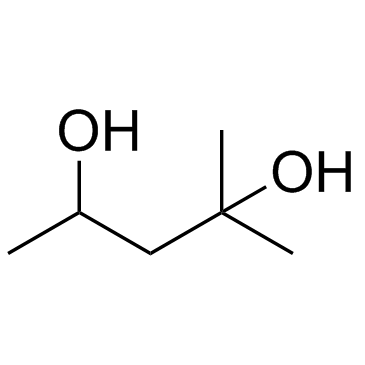The structures of transcription factor CGL2947 from Corynebacterium glutamicum in two crystal forms: a novel homodimer assembling and the implication for effector-binding mode.
Yong-Gui Gao, Min Yao, Hiroshi Itou, Yong Zhou, Isao Tanaka
Index: Protein Sci. 16(9) , 1878-86, (2007)
Full Text: HTML
Abstract
Among the transcription factors, the helix-turn-helix (HTH) GntR family comprised of FadR, HutC, MocR, YtrA, AraR, and PlmA subfamilies regulates the most varied biological processes. Generally, proteins belonging to this family contain an N-terminal DNA-binding domain and a C-terminal effector-binding/oligomerization domain. The members of the YtrA subfamily are much shorter than other members of this family, with chain lengths of 120-130 residues with about 50 residues located in the C-terminal domain. Because of this length, the mode of dimerization and the ability to bind effectors by the C-terminal domain are puzzling. Here, we first report the structure of the transcription factor CGL2947 from Corynebacterium glutamicum, which belongs to the YtrA family. The monomer is composed of a DNA-binding domain containing a winged HTH motif in the N terminus and two helices (alpha4 and alpha5) with a fishhook-shaped arrangement in the C terminus. Helices alpha4 and alpha5 of two monomers intertwine together to form a novel homodimer assembly. The effector-accommodating pocket with 2-methyl-2,4-pentanediol (MPD) docked was located, and it was suggested to represent a novel mode of effector binding. The structures in two crystal forms (MPD-free and -bound in the proposed effector-binding pocket) were solved. The structural variations have implications regarding how the effector-induced conformational change modulates DNA affinity for YtrA family members.
Related Compounds
| Structure | Name/CAS No. | Molecular Formula | Articles |
|---|---|---|---|
 |
Hexylene glycol
CAS:107-41-5 |
C6H14O2 |
|
Self-immolative polycations as gene delivery vectors and pro...
2015-02-02 [Mol. Pharm. 12(2) , 332-41, (2015)] |
|
Flavonoid-based pH-responsive hydrogels as carrier of unstab...
2015-05-01 [Pharm. Dev. Technol. 20(3) , 288-96, (2015)] |
|
The conserved Trp114 residue of thioredoxin reductase 1 has ...
2015-01-01 [Cell Death Dis. 6 , e1616, (2015)] |
|
Refolding of SDS-denatured proteins using amphipathic cosolv...
2013-01-01 [Curr. Protoc. Protein Sci. Chapter 28 , Unit28.5, (2013)] |
|
Atomic force microscopy of native human metaphase chromosome...
2006-03-01 [Arch. Histol. Cytol. 69(1) , 73-8, (2006)] |